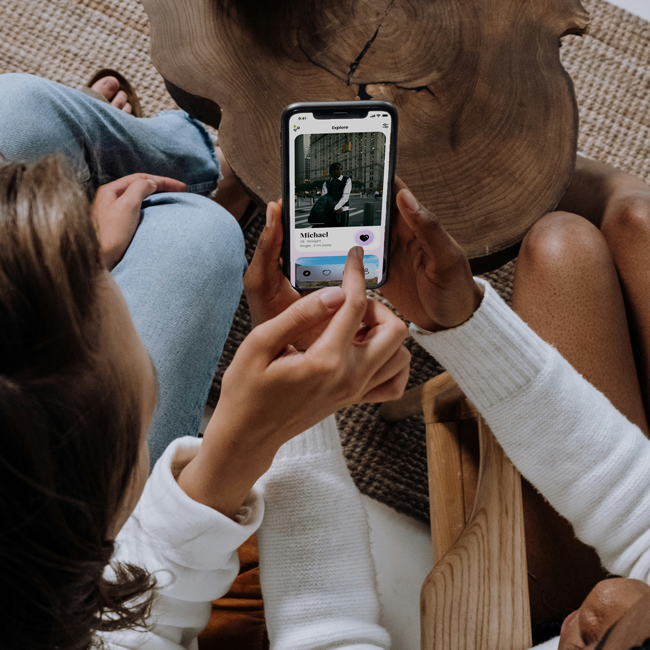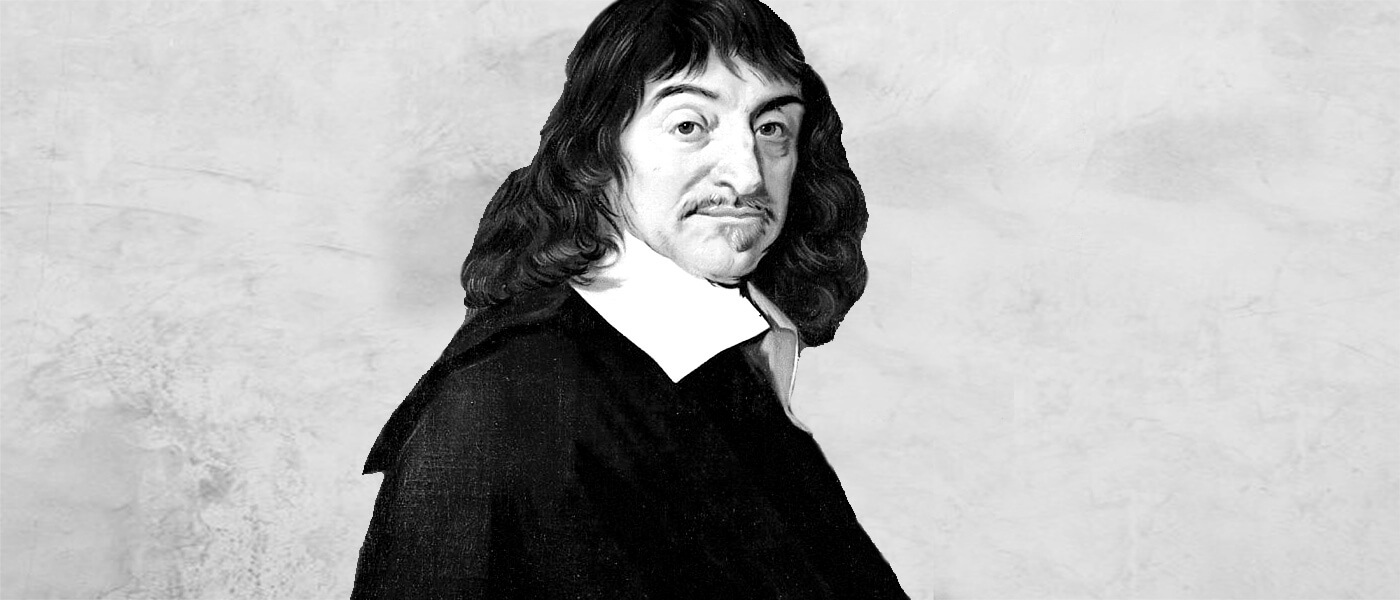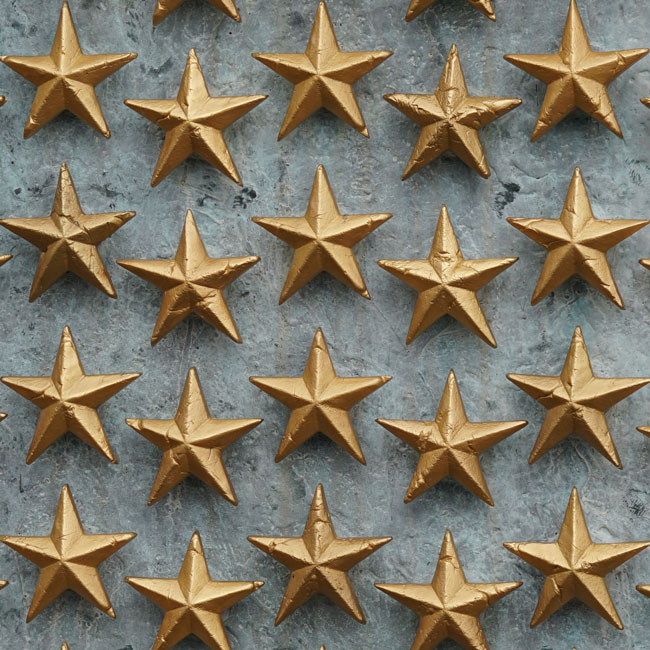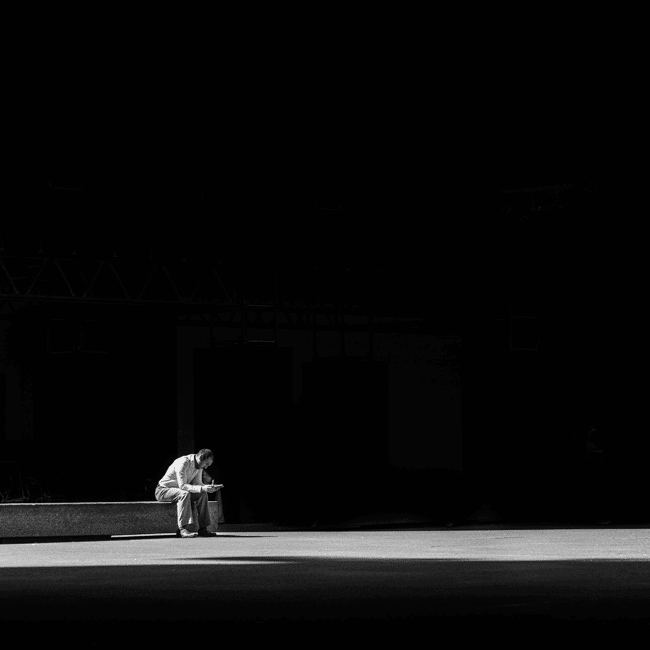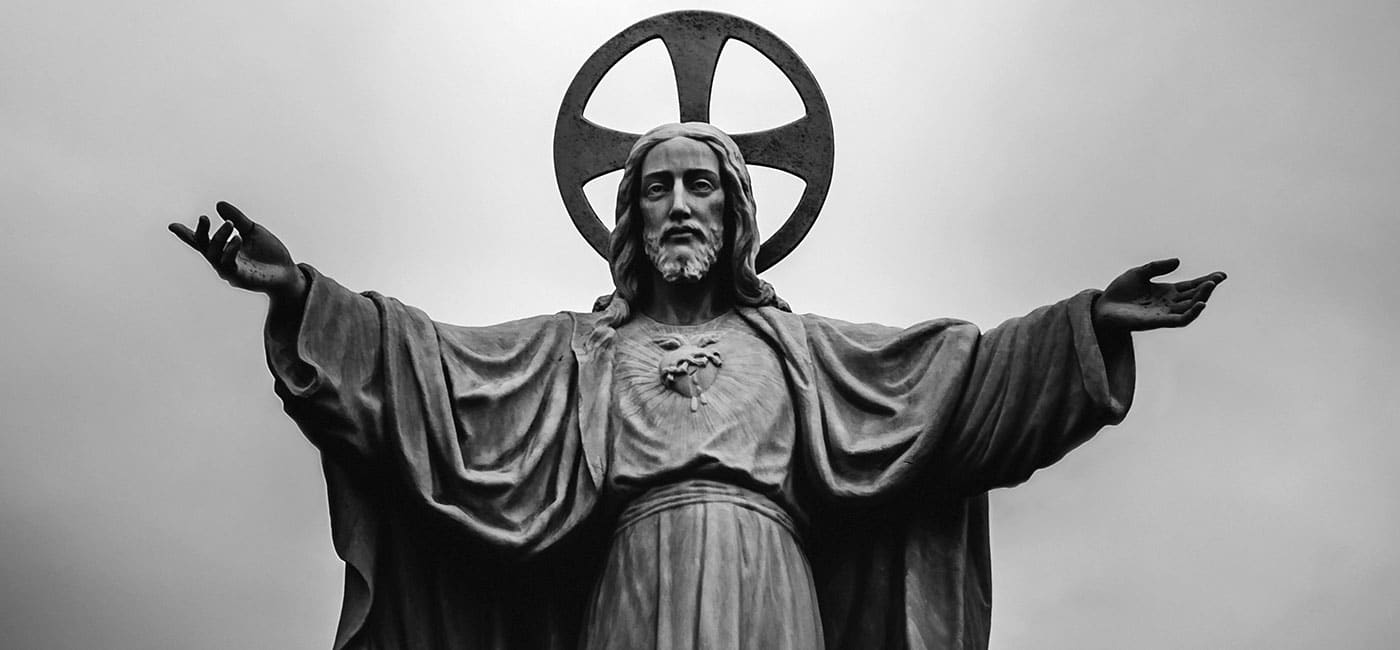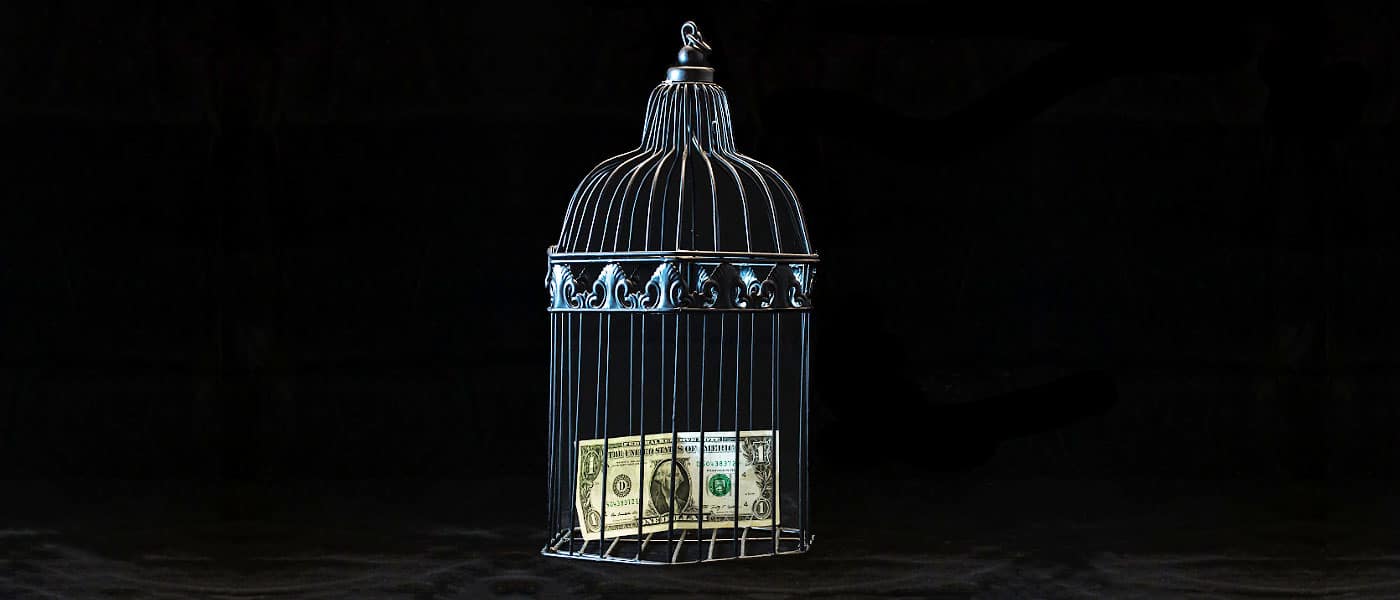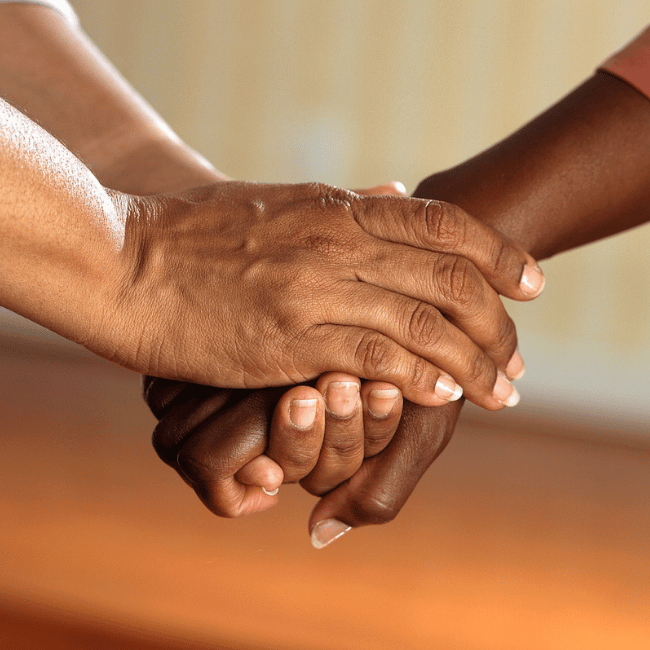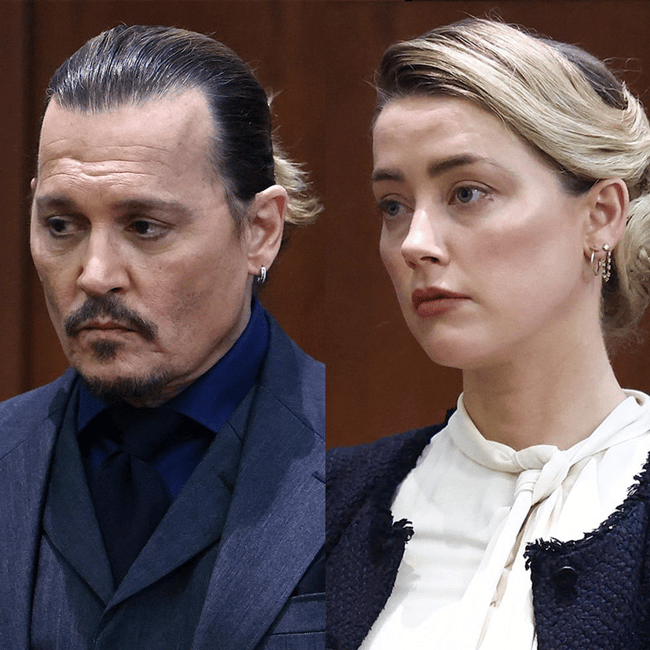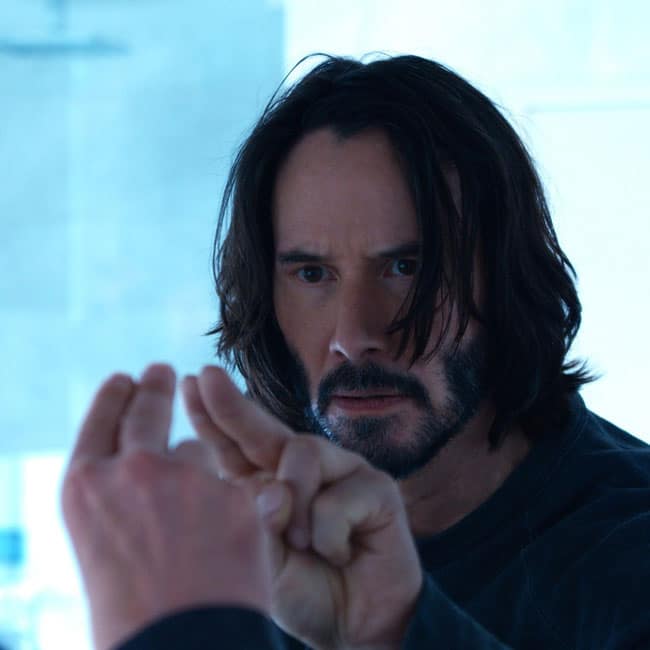Ethics Explainer: Social philosophy

Ethics Explainer: Social philosophy
ExplainerPolitics + Human RightsRelationships
BY The Ethics Centre 7 JUL 2022
Social philosophy is concerned with anything and everything about society and the people who live in it.
What’s the difference between a house and a cave, or a garden and a field of wildflowers? There are some things that are built by people, such as houses and gardens, that wouldn’t exist without human intervention. Similarly, there are some things that are natural, such as caves and fields of wildflowers, that would continue to exist as they were without humans. However, there is a grey area in the middle that social philosophers study, including topics like gender, race, ethics, law, politics, and relationships. Social philosophers spend their time parsing what parts of the world are constructed by humans and what parts are natural.
We can see the beginnings of the philosophical debate of social versus natural through Aristotle’s and Plato’s justifications for slavery. Aristotle believed that some people were incapable of being their own masters, and this was a natural difference between a slave and a free person. Plato, on the other hand, believed that anyone who was inferior to the Greeks could be enslaved, a difference that was made possible by the existence of Greek society.
Through the Middle Ages, attention turned to questioning religion and the divine right of monarchs. During this era, it was believed that monarchs were given their authority by God, which was why they had so much more power than the average person. British philosopher John Locke is well known for arguing that every man was created equally, and that everyone had an equal right to life, liberty, and pursuit of property. His conclusion was that these fundamental rights were natural to everyone, which contradicted the social norms that gave almost unlimited power to monarchs. The idea that a monarch naturally had the same fundamental rights as someone who worked the land would have to fundamentally change the structure of society.
During the 19th century, some philosophers began to question social categories and where they came from. Many people at the time held that social classes, or groups of people of the same socioeconomic status, were a result of biological, or natural, differences between people. Karl Marx, known for his 1848 pamphlet The Communist Manifesto, proposed his own theory about social classes. He argued that these socioeconomic differences that formed social differences were a result of the type of work that someone did and therefore social classes were socially, not biologically, constructed.
Today social philosophers are concerned with a variety of questions, including questions about race, gender, social change, and institutions that contribute to inequality. One example of a social philosopher who studies gender and race is Sally Haslanger. She has spent her time asking what are the defining characteristics of gender and race, and where these characteristics come from. In other cases, social philosophy is blended with cognitive psychology and behavioural studies, asking which of our behaviours are influenced by the society we live in and which behaviours are “natural,” or a product of our biology.
Social philosophy and ethics
Many of the questions social philosophers are concerned with are intertwined with ethics. Part of living in a society requires an (often unwritten) ethical code of conduct that ensures everything functions smoothly.
Thomas Hobbes’ social contract theory spells out the connection between a society and ethics. Hobbes believed that instead of ethics being something that existed naturally, a code of ethics and morality would arise when a group of free, self-interested, and rational people lived together in a society. Ethics would arise because people would find that better things could come from working together and trusting each other than would arise from doing everything on their own.
Today, much of how we act is determined by the societies we live in. The kinds of clothes we wear, the media we interact with, and how we talk to each other change depending on the norms of our society. This can complicate ethics: should we change our ethical code when we move to a different society with different norms? For example, one culture may say that it’s morally acceptable to eat meat, while a different culture may not. Should a person have to change the way they act moving from the meat-eating culture to the non-meat-eating culture? Moral relativists would say it is possible for both cultures to be morally right, and that we should act accordingly depending on which culture we are interacting with.
A significant reason that social philosophy is still such a nebulous field is that everyone has different life experiences and interacts with society differently. Additionally, different people feel like they owe different levels of commitment to the people around them. Ultimately, it’s a serious challenge for philosophers to come up with social theories that resonate with everyone the theory is supposed to include.
Ethics in your inbox.
Get the latest inspiration, intelligence, events & more.
By signing up you agree to our privacy policy
You might be interested in…
WATCH
Relationships
Unconscious bias
Opinion + Analysis
Health + Wellbeing, Relationships
Rationing life: COVID-19 triage and end of life care
Opinion + Analysis
Relationships, Society + Culture
FODI launches free interactive digital series
Big thinker
Relationships, Society + Culture
9 LGBTQIA+ big thinkers you should know about
BY The Ethics Centre
The Ethics Centre is a not-for-profit organisation developing innovative programs, services and experiences, designed to bring ethics to the centre of professional and personal life.
Enough with the ancients: it's time to listen to young people

Enough with the ancients: it’s time to listen to young people
Opinion + AnalysisRelationships
BY Daniel Finlay Anna Goodman 6 JUL 2022
Nearly 20% of Australia’s population is between the ages of 10 and 24, yet their social and political voices are almost unheard. In our effort to amplify these voices, The Ethics Centre will be hosting a series of workshops where young people can help us better understand the challenges they face and the best ways for us to help. We’re listening.
You’re sitting at the dinner table at a big family gathering. Conversation starts to die down and suddenly your uncle says: “Have you seen that Greta girl on the news? I understand that climate change is a big deal, but the kids these days are so angry and loud. They’d get more done if they showed some respect.”
Many people under 25 have been in this position and had to make a choice about how to respond. This decision is often more difficult than it seems because there doesn’t seem to be a preferable option. Philosopher and feminist theorist Marilyn Frye gave a name to this kind of situation: a double-bind. In her essay Oppression, she defines the double-bind as a “situation in which options are reduced to a very few and all of them expose one to penalty, censure, or deprivation.”
Frye originally used the double-bind to talk about how women often found themselves in situations where they were going to be criticised equally for engaging with or ignoring gender stereotypes. The double-bind can be used to explain the difficult positions that anyone who experiences a negative stereotype finds themselves in and provides insight into why people with important perspectives often feel the need to censor themselves.
Let’s say we do choose to speak up. We can justify our anger. There are so many huge issues that impact the world – climate change, the pandemic, rampant inequality, and so on – and it feels like things are changing far too slowly.
Young people especially should be allowed to be angry, because this is the world we will inherit.
Unfortunately, it’s a common experience for younger generations to feel that their voices aren’t listened to or respected. Even though these reasons should more than justify the anger and frustration of young people, emotion can often (unjustly) obfuscate the reality of what we say.
So, let’s try the other way. We choose to not engage and instead let the comment slide. However, then we’re at risk of being seen as the “apathetic teen,” a narrative that has been perpetuated ad nauseam claiming that young people don’t really care about anything (which we know isn’t true).
Young people care about a lot, and have a lot to care about. Not only do they care, they act. A recent survey of 7,000 young people found that two-thirds of respondents seek out ways to get involved in issues they care about, and 64% believe that it is their personal responsibility to get involved in important issues. So, it’s not always easy to just let your uncle’s tone-policing go when you feel passionate about a topic, especially when staying silent can be as damaging as speaking up.
Here we see the double-bind in action: neither of the most obvious responses to the situation are favourable or even preferable. Because of a build-up of social and cultural assumptions and expectations, we’re often placed in a position where we seem to lose in some way no matter what we decide to do.
The Australian youth experience
Unfortunately, age discrimination towards young people doesn’t end at the dinner table. A 2022 survey conducted by Greens Senator Jordon Steele-John found that “overwhelmingly, young people are feeling ignored and overlooked”. Gen Z (people born between 1995 and 2010) are more likely to be viewed as “entitled, coddled, inexperienced and lazy,” which is having negative effects on young people’s confidence in the workplace. It doesn’t help that young people are hugely underrepresented in the Australian government and positions of power in the private sector.
Young people should not have to convince everyone that their voices are worth listening to. The combination of endless global issues and lack of representation in positions of power, which is compounded by a culture that doesn’t give appropriate weight to their contributions, creates a climate that leaves young people feeling frustrated and disempowered.
So, what can we do? As with most social issues, there isn’t one simple fix to the underrepresentation and misrepresentation of youth because it stems from a few different things that are ingrained in our society and culture. We can question our assumptions and those of others by recognising that “youth” as a social or cultural category isn’t really coherent anymore. There has been an enormous rise in the number of subcultures that are increasingly interconnected thanks to mass media and the internet, meaning that “young people” are more diverse than ever before.
Most importantly, we can bring young people together and into spaces where their voices will be heard by people who are in a position to make change.
As part of our mission to do just that, The Ethics Centre is developing a growing number of youth initiatives, like the Youth Advisory Council and the Young Writer’s Competition.
Through these initiatives, we are starting an ongoing conversation with young people about the areas in their lives and futures that they think ethics is needed the most.
Ethics in your inbox.
Get the latest inspiration, intelligence, events & more.
By signing up you agree to our privacy policy
You might be interested in…
Opinion + Analysis
Business + Leadership, Health + Wellbeing, Relationships
Office flings and firings
Opinion + Analysis
Relationships
The new normal: The ethical equivalence of cisgender and transgender identities
Opinion + Analysis
Relationships
Freedom and disagreement: How we move forward
Opinion + Analysis
Relationships
In two minds: Why we need to embrace the good and bad in everything
BY Daniel Finlay
Daniel is a philosopher, writer and editor. He works at The Ethics Centre as Youth Engagement Coordinator, supporting and developing the futures of young Australians through exposure to ethics.
BY Anna Goodman
Anna is a graduate of Princeton University, majoring in philosophy. She currently works in consulting, and continues to enjoy reading and writing about philosophical ideas in her free time.
Based on a true story: The ethics of making art about real-life others

Based on a true story: The ethics of making art about real-life others
Opinion + AnalysisRelationshipsSociety + Culture
BY Joseph Earp 29 JUN 2022
In October of 2021, The New York Times published a long article called ‘Who Is The Bad Art Friend?’, a story of kidney donations, poetic license, and vicious authors falling over one another to write damning words about those they publicly called their friends. Within hours of it hitting the internet, it had become the story of the day. And then the day after that. And then the day after that.
The thrust of ‘Who Is The Bad Art Friend?’ is simple. Seven years ago, an aspiring author named Dawn Dorland donated a kidney, a selfless act motivated – at least on first glance – by pure charity. Rather than let this act remain anonymous, Dorland instead posted about it frequently across the internet, particularly in a digital writer’s group she was part of. One of the members of that group, Sonya Larson, began murmuring to other authors about what she saw as Dorland’s shameless desire for attention, turning Dorland and her donation into a particularly damning punchline.
But rather than keep her takedowns to private messages, Larson wrote a not-so-veiled short fiction story about Dorland and her perceived bent towards self-celebration. Titled ‘The Kindest’, the story draws heavily on Dorland’s life, and turns her into a warped and twisted version of herself; too arrogant and self-involved to behave in a genuinely charitable way, motivated only by pride and sickening grandiosity. Flash forward a few years, and Dorland had launched legal action against Larson over the story, a protracted battle that serves as the climax for ‘Who Is The Bad Art Friend?’
There is a good reason that the fallout between the two writers so firmly captured the attention of the internet. It’s not just the tone of ‘Who Is The Bad Art Friend?’, the writing is unabashedly gossipy, filled with back-and-forths between Larson and Dorland that are laced with enough invective to make your toes curl. It’s that the story provided an opportunity for the internet to agonize over a very old argument, given new life in the era of streaming and a fixation on true crime: who has the right to tell another’s story?
This Is Your Life
We tend to believe that we are the authors of our own life story – that we have an essential and inalienable hold over our own narratives. There is nothing, so one cultural myth goes, as sacrosanct and personal as our identity.
As such, those who adopt this view on identity consider the act of turning another human being’s life into art to be one steeped in ethical conundrums: an issue of consent and privacy, where the wishes of the subject must be valued over the artistic decisions of the author.
These are the people who took Dorland’s side in the ‘Who Is The Bad Art Friend?’ argument. They are also the people who have a bone to pick with the recent glut of “ripped from the headlines” media content, from Hulu’s Pam & Tommy, a fictionalised version of the media fallout after the release of Pamela Anderson’s sex tape, to Inventing Anna, a series following the rise and fall of Anna Delvey (real name Sorokin), a socialite who scammed her way through America’s upper class.
In each of these cases, a real-life story – with, in many cases, real-life victims – has been shaped into fiction, often without the subject’s consent.
Anderson herself pushed against Pam & Tommy being made, while Sorokin wrote an angry letter about the series from her jail cell.

But to believe that you – and only you – can tell your own story is to believe in a shaky foundational premise. Such an argument rests on the idea that each of us is hermetically sealed away from the world, and hold important and relevant insight into ourselves that no others hold.
It is the case that we know certain things about our lives that others do not. But we are embedded in a web of social relations, and in the imaginations and minds of all those we encounter. We are not, in fact, the faultless experts on ourselves. Our personality, such as it is, is shaped and tested in the minds of those who receive us. The delineations between “my story” and “your story” or “our story” are shakier than it might first appear. We are constructed by the world, not sat in opposition to it.

Why This Argument? Why Now?
People’s sacrosanct belief in the importance of their own personal identity – treated as though our narratives about ourselves are delicate pieces of crystal we hold close to our chests, too fragile to let anyone else hold, is tied to a growing retreat from structural and systemic issues, and an embracing of personal ones. The ultimate social currency is often not based in the story of many, but the story of one. “I am me, and nobody else could be me, and for that reason, nobody else could tell my story but me.”
On the whole, the creative scope of the streaming giants, particularly Netflix, and major Western movie studios, has changed tremendously, from the cultural to the individual. Adam Curtis, the documentarian, has pointed this out, bemoaning the fact that there are few artists looking to describe how life right now feels. In America, Australia and the UK in particular, mainstream creatives have limited desire to capture any experience that expands beyond very particular lived ones, that are presented as isolated, and unique.
The theorist and philosopher Christopher Lasch covered this decades ago, in his groundbreaking work The Culture of Narcissism. He addressed what he saw as a tendency to go inwards: faced by a souring political climate, Lasch argued Americans had traded a hope for big change, with a fixation on smaller, more intimate and cosmetic shifts.
It is no surprise then that, though arguments around the ethics of storytelling have been waging for decades, they have been given new poignancy by the frequency of creative projects that fixate on only one life, and the increasingly popular belief that we are alone, and lonely, and utterly unlike even those from our same cultural and class background.
The beauty of art is that it need never be blinkered in this way. I am not advocating for only one type of art, the cultural instead of the personal – and I don’t believe that Curtis or Lasch are either. That’s one way of falling into precisely the artistic stalemate we find ourselves in. It’s not hopping from one mode of storytelling to another, it’s mixing the two, providing a rich, mainstream creative palette.
In fact, the problem is a creative fixation, one that has begun to dominate swathes of cultural discourse and entertainment. A generation of storytellers have settled themselves into a rut, hashing the same old beats over and over, telling stories with the same foundational premise – we are not like each other. In turn, that means our questions about so much mainstream art are becoming repetitive, the discourses surrounding ‘Who Is The Bad Art Friend?’ and Pam & Tommy and Inventing Anna just familiar talking points shot weakly through with a desperate, failing dose of adrenaline.
The question, asked over and over again, is: “Who can tell my story?” But perhaps we should ask why we even consider it “my” story in the first place.
Ethics in your inbox.
Get the latest inspiration, intelligence, events & more.
By signing up you agree to our privacy policy
You might be interested in…
Opinion + Analysis
Relationships
Ask an ethicist: How much should politics influence my dating decisions?
Opinion + Analysis
Relationships
We already know how to cancel. We also need to know how to forgive
Opinion + Analysis
Health + Wellbeing, Society + Culture
The right to connect
Explainer
Politics + Human Rights, Relationships
Ethics Explainer: The Harm Principle
BY Joseph Earp
Joseph Earp is a poet, journalist and philosophy student. He is currently undertaking his PhD at the University of Sydney, studying the work of David Hume.
Beyond consent: The ambiguity surrounding sex

Beyond consent: The ambiguity surrounding sex
Opinion + AnalysisRelationships
BY Eleanor Gordon Smith 24 JUN 2022
In April 2021, partly in response to a series of high-profile sexual assault allegations, the Commonwealth government funded a set of educational videos about sexual consent. Safe to say, they did not do the job.
There was the infamous milkshake video, in which a girl smears ice cream on her partner’s face with a devious grin; one in which a taco is distinguished from a person by the fact that a taco cannot have preferences, and one set at a swimming pool, in which the desire to go for a swim is compared to the desire (or not) to have sex. The videos were condemned in ringing terms by educators and activists – they were “problematic”, an insult to students’ intelligence, or too flippant for the gravity of the subject.
Anyone who has sat through workplace or educational training about harassment and sexual boundaries knows what a difficult feat these videos had to pull off. It’s hard to talk about sex, because sex is not one thing – even between partners, much less across the population. This makes it hard, in turn, to talk about sexual ethics — there are many more ethical lenses available than the ethics of consent.
Sex ranges from the grave and the intimate to the flippant and the casual, from the depths of taboo to the frothiest of frivolities, from power and domination to play and healing, from authentic self-expression to pantomimed degradation. It is such a chimerical experience that it’s no wonder we struggle to talk about its morality in clear and unambiguous terms. No wonder our sexual ethics education materials can fall into a kind of “uncanny valley” – videos depicting wooden interactions between characters who at once are blithely unaware of sexual norms and calmly receptive to learning them, or oddly literal exchanges that feel like they’re discussing an experience almost, but not quite, entirely unlike sex.
How can sex be so operatic and so stone quotidian, so universal and so private, so dangerous and so familiar?
Why, when our sexual experiences are so many and so varied, do we hope that an ethics of consent will be able to accommodate them all?
If we wanted a more holistic approach to sexual ethics and education, which moral frameworks would we turn to?
Time was, if you wanted an ethics of sex, the psychoanalysts were the place to turn. Freudian analyses of desire located it squarely in the individual and the underbelly of their consciousness. Desire was seldom understood as something about which one could ask the questions of justice – Is it fair? Who deserves it? – or as a candidate for political analysis. But beginning in the 20th Century, a feminist perspective rejected this picture. Feminist philosophers and legal scholars like Catherine MacKinnon and Andrea Dworkin argued that desire was both an expression of and a means of enforcing the prevailing hierarchies of power. In Mackinnon’s “Pleasure Under Patriarchy”, she quotes poet Adrienne Rich’s Dialogues: “I do not know who I was when I did those things, or whether I willed to feel what I had read about”.
Once the questions of justice had been asked around sex – once it was pointed out that power and hierarchy do not stop at the door to the home or the bedroom – there emerged uneasy questions about how sexual unfairness could create demands of sexual fairness: for instance, does anyone have a right to sex? (This question has been explored by Oxford Professor Amia Srinivisan at length). Or can a person have a moral complaint when over and over again, they are rejected for sex; unable – through the aggregation of other people’s choices – to access an experience that everyone else says is one of life’s central joys?
Sexual desire has long discriminated along racial and disability lines – as Srinivasan notes, Asian men on dating apps or disabled people are frequently told to their faces that they are instantly rejected as prospective sexual partners because I would never sleep with someone like you. How can we make sense of the utter rigidity of the rule that nobody should have sex with anyone they don’t want to – alongside the possibility that those choices en masse enact a prejudice that each of us might individually deny? One more mystery for the ethics of sex; for the challenge of bringing justice to something as fraught as desire. As Srinivasan so memorably writes: “There is nothing else so riven with politics and yet so inviolably personal.”
In this morass of ethical grey, the concept of consent seemed to promise some black-and-white. We might not know the full list of our sexual rights, but an ethics of consent at least clearly names the sexual wrongs. The centrality of consent to sexual ethics is in fact a relatively recent development; the concept gained traction in the 1980s, at roughly the same time as the autonomous individual became the main character of political analysis. It was not long before then that “informed consent” was still a foreign notion in healthcare ethics, and that rape of a sex worker was often understood not as a violation of consent, but as theft of services.
Perhaps consent education reaches for simple metaphors like milkshakes, tacos, or cups of tea because an ethics of consent is simple – so simple we can say it in the familiar truism: “No means no”. But the trouble with centering consent in our sexual ethics is that it risks confusing ‘not-capital-B-Bad’ with ‘good’. Plenty of consensual sex is also cruel, harmful, selfish, painful, alienating, or subordinating.
Consensual sex is not necessarily ethical, nor even necessarily good. By treating non-consensual sex as the primary case about which to do sexual ethics – the jumping off point for our analysis and education – we risk introducing young people to sexual morality primarily through the category of wrong and how to avoid it, instead of through the lens of sexual joy and how to share it. Sex can be a way to connect with one another, to know, to be vulnerable, to give, to reveal, to trust – the intelligibility of aspiring to sex like this can be lost when the highest aspiration of our sexual ethics is “getting consent”.
By treating non-consensual sex as the primary case about which to do sexual ethics – the jumping off point for our analysis and education – we risk introducing young people to sexual morality primarily through the category of wrong and how to avoid it, instead of through the lens of sexual joy and how to share it.
One of the central tasks of an ethical life is to distinguish between the realm of duty – what can be demanded of us, and the realm of benevolence, what we can freely give, and to realise that the person who thinks only about their duties is in some ways a moral miser. An ethics of sex which prioritises duty by emphasising consent and permission can accidentally obscure the possibility of an ethics of benevolence – one which would not stop after asking what we owe to one another, but would carry on, asking how we might help them flourish.
To live an ethical life is more than avoiding wrong – how strange it would be to forget that in our most vivid encounters with others.
Ethics in your inbox.
Get the latest inspiration, intelligence, events & more.
By signing up you agree to our privacy policy
You might be interested in…
Opinion + Analysis
Relationships
“I’m sorry *if* I offended you”: How to apologise better in an emotionally avoidant world
Big thinker
Relationships
Big Thinker: René Descartes
Opinion + Analysis
Politics + Human Rights, Relationships
We’re being too hard on hypocrites and it’s causing us to lose out
Opinion + Analysis
Relationships
5 stars: The age of surveillance and scrutiny
BY Eleanor Gordon Smith
Eleanor Gordon-Smith is a resident ethicist at The Ethics Centre and radio producer working at the intersection of ethical theory and the chaos of everyday life. Currently at Princeton University, her work has appeared in The Australian, This American Life, and in a weekly advice column for Guardian Australia. Her debut book “Stop Being Reasonable”, a collection of non-fiction stories about the ways we change our minds, was released in 2019.
Uncivil attention: The antidote to loneliness

Uncivil attention: The antidote to loneliness
Opinion + AnalysisRelationships
BY Dr Tim Dean 14 JUN 2022
We have built ourselves a lonely world but there are ways to forge the genuine human connections that we all need to flourish.
We live in a strange world. Consider the skill that many of us have carefully cultivated over years of city living of actively ignoring other people around us while hoping that those people will actively ignore us in return.
Think about how you enter a lift in a busy shopping centre or an office building. Perhaps a quick glance at those already standing inside, a small shuffle to ensure you’re not standing too close to anyone else, a quick tap of the “open door” button to allow a latecomer to enter, a fleeting smile to acknowledge that they almost missed it, and then you diligently stare into space desperately hoping no-one starts a conversation. Some lifts even mercifully include little screens displaying the weather and news headlines that offer everyone inside a sink for their collective attention.
This is a textbook example of what the Canadian sociologist Ervin Goffman called “civil inattention”. This is our tendency to actively not engage with those around us while not ignoring them entirely.
Civil inattention enables us to ensconce ourselves in a protective bubble of anonymity even while we’re shoulder-to-shoulder with other people. It’s both a defence mechanism that prevents us from having to constantly expend social energy interacting with every individual we encounter while also being a social lubricant that allows millions of strangers to coexist in relative peace.
The price of this unwritten social contract of non-engagement is loneliness. Indeed, it’s easier to feel isolated and disconnected from others in the middle of a bustling city than it is in a small town.
And with the growth of high density living over the last several decades so too has loneliness spread, especially in the wake of the COVID-19 pandemic. Loneliness was already prevalent prior to the advent social distancing and enforced lockdowns, but recent surveys have revealed a sharp increase, with over half of respondents reporting they have experienced loneliness during the pandemic.
Contrast the civilly inattentive world to the social world that our minds have evolved to expect. That is a world laced with rich social interaction, one where our very identities are interlaced with those around us. It’s a world that our ancestors dwelt in for thousands of generations, a world that shaped our minds, and one that only changed with the advent of high density living.
The anthropologist Lorna Marshall vividly described the intimate connectedness among one small-scale society, the Nyae Nyae !Kung people of the Kalahari desert.
“Their need to avoid loneliness, I think, is actually visible in the way families cluster together in their werfs and in the way people sit, often touching someone else, shoulder against shoulder, ankle across ankle. Comfort and security for them lie in belonging to their group, free from hostility or rejection,” she wrote.
This is the world where belonging is a given and it’s almost impossible to be alone. It’s the world that many modern folk seek out through social media, popular culture, the bustle of city life or even religion. These give the trappings of connectedness but they’re all ultimately based on illusion. What we yearn for is the opposite of loneliness: genuine connection.
The good news is that there are ways to build genuine connection. One way to do so is just by having better conversations.
You can think about Goffman’s civil inattention as being a mask of civility that we wear in public that presents the face that society expects us to have but also covers our deeper self. It’s a defence mechanism but it’s also a barrier to genuine connection.
We can see this in many of the conversations we have with friends and colleagues, where we’re expected to talk about how well we’re doing, about our successes and triumphs. This tendency is only amplified on social media, where we have even greater opportunity – and expectation – to curate a positive image or flex about our privilege (#blessed).
But to really connect with someone, we need to go beyond our respective masks to reach the whole person underneath, including their strengths and their vulnerabilities, their successes and their failures, their hopes as well as their fears. It’s in the mutual recognition that we’re all complex and flawed beings, often stumbling our way through life, that we can build genuine connection.
This doesn’t mean we should be opening up to strangers about our greatest blunders in a lift, but it does mean allowing ourselves to lower the mask a little at a time around friends, acknowledging some of our vulnerabilities and helping them to feel comfortable doing the same. It means asking questions about more than just what they did on the weekend or which footy team won or lost. It means asking how they felt about it, what they hope for, what they regret or what they learnt. And it means shutting up and really listening to them, withholding judgement and validating how they feel.
You might be surprised at how quickly a good conversation, one where you lower your mask even a little, can build a connection that is meaningful and lasting. Sharing a little of our deeper self and getting to know a little of others’ deeper selves can feel confronting, it can challenge societal norms of what polite conversations look like, but they are also one of the greatest – and easiest – antidotes to loneliness. I call it “uncivil attention”.
Ethics in your inbox.
Get the latest inspiration, intelligence, events & more.
By signing up you agree to our privacy policy
You might be interested in…
Opinion + Analysis
Relationships
It takes a village to raise resilience
Opinion + Analysis
Relationships
If you condemn homosexuals, are you betraying Jesus?
Opinion + Analysis
Health + Wellbeing, Relationships
Banning euthanasia is an attack on human dignity
Explainer
Relationships
Ethics Explainer: Negativity bias
BY Dr Tim Dean
Dr Tim Dean is Philosopher in Residence at The Ethics Centre and author of How We Became Human: And Why We Need to Change.
Meet Joseph, our new Fellow exploring society through pop culture

Meet Joseph, our new Fellow exploring society through pop culture
Opinion + AnalysisRelationshipsSociety + Culture
BY The Ethics Centre 7 JUN 2022
From The Matrix to Euphoria, writer, philosopher and poet Joseph Earp has profiled some of the greatest philosophers, TV shows, films, music and pop culture moments to date, discussing what they can tell us about ourselves and the world.
Which is why we’re excited to share we’ve recently appointed Joseph as an Ethics Centre Fellow. Currently undertaking his PhD at The University of Sydney, studying the work of David Hume, we sat down with Joseph for a brief get-to-know-you chat to discuss ethics, his favourite philosophers, and the role of pop culture in society.
Tell us, what attracted you to becoming a philosopher?
You learn the language of institutional philosophy by reading it, and – as long as your financial and geographical circumstances allow for it – by studying it in an academic setting. But the central questions that drive philosophical work are innate to almost all people, regardless of academic study.
I am a pragmatist, so I don’t believe that philosophers hold insight that stretches beyond the understanding of those who haven’t studied the discipline. As philosophers, we are merely using a certain vocabulary to ask our questions. I grew to love that vocabulary in my late twenties through university study, under the guidance of my honours and PhD supervisor, Anik Waldow and those academics I studied closely with throughout my undergraduate degree. Most notably, these academics include Caroline West, who I believe to be one of our country’s most unique, inspired, and challenging thinkers – even and especially as I disagree with her – and David Macarthur. My study with these people is what drew me to being a philosopher in the strictest sense. But I think we philosophers are, thankfully, just doing what everyone else is doing.
Do you specialise in any key areas?
Generally, I write about popular culture, emotion, and virtue ethics, but my key area of specialisation is the philosophy of sex. I think that we sadly retain, in many cultures, a suspicion and fear of sex – one that infringes on our ability to self-describe and live our most flourishing lives.
I often think of a story about Pablo Picasso. Towards the end of his life, he was so rich and famous that he could draw any object in the world, whether it be a Ferrari or a mansion, and his drawing would be worth more than the object itself. He could sell a sketch of an object, and use the accrued capital to buy that object – which is a way of saying he could create changes by charting what he felt had already changed. It seems to me that’s the potential, and the potential harm, of philosophical thinking. We construct the world by calling it what we think it is, and for a long time, our views on sexuality have created a world that contains a lot of fear and sexual repression, both internally and externally maintained.
Your honours thesis focuses on emotional contagion. What place does emotion have when it comes to ethics?
Personally, I think it’s emotion all the way down when it comes to ethics, as with most things. David Hume is the philosopher that much of my work has operated in the framework of, and I agree with Hume that when we talk about “rationality” – a word that is sometimes conceived as being opposed to emotion – we are really just talking about a certain kind of emotional work.
What have you been working on this year?
One of the most profound experiences of both my intellectual and personal life has been connecting with a community of thinkers whom I met largely through my university work – all of them world-class philosophers, some of them write for, and work with, the Ethics Centre; and some of them no longer consider themselves strictly philosophers at all. In particular, Georgia Fagan, Danielle Turnbull, Finola Laughren, Eleanor Gordon-Smith, Grace Sharkey, Oscar Sannen, Mitch Flitcroft, Alexi Barnstone, Elle Lewis, Mitchell Stirzaker, Henry Barlow, Zach Wilkinson, Finn Bryson, and Henry Hulme.
All of these people have work that you can, and should, find online through an easy Google search, and work which I believe in every case benefits the world, and drives real change. What else is philosophy for? I am continually astonished by the intellect and bravery of these collaborators and friends. I consider myself useless without them. When I think about the real work that I have done this year, it is not anything I have written, but conversations with these people, and the ways I have learnt from them.
Do you have a favourite philosopher or writer?
Hume is the philosopher whose writing I know best, but I believe the thinker you apply the greatest amount of study to is usually the one who you have the strangest, most frequently frustrated relationship with. So my favourite – as in, the philosopher who serves as the background to almost all of what I think and do, and who I have the most uncomplicated connection to – is the pragmatist Richard Rorty. It’s Rorty who cuts through the chaff by asking, again and again, one of the simplest questions: what is the real-world application of our work? And it’s Rorty who tells us that we should remember we can make ourselves whoever we want to be.
Your writing covers a lot of tv series, films and music. Why is pop culture important?
Again – it’s Rorty. Rorty believed that social change isn’t led by philosophers, particularly those analytic philosophers who consider their work to be sorting through “falsehoods” and “truths”. For Rorty, philosophers inspire prophets and poets, and prophets and poets are the ones who do the work of change. That is, for me, the importance of pop culture. That form of art is guided by philosophical questions, and led by prophets and poets, and represents a way of understanding a culture and a vocabulary. It’s how lives are changed, and possibilities for self-description are opened up
What are you reading, watching or listening to at the moment?
The poetry collection The Cipher, by Molly Brodak, a writer who means a great deal to me; the pornographic film Corruption by perennial sadsack and visionary Roger Watkins, which I try to return to every month or so; and the song ‘Lark’ by Angel Olsen, often enough that I should probably take a break.
Let’s finish up close to home. What does ethics mean to you?
We all play the game of ethics, and we all want to play it better, and we’ll never play it well. That, in fact, is the joy – the trying, and the starting again.
Ethics in your inbox.
Get the latest inspiration, intelligence, events & more.
By signing up you agree to our privacy policy
You might be interested in…
Opinion + Analysis
Relationships
The philosophy of Virginia Woolf
Opinion + Analysis
Business + Leadership, Relationships
Can you incentivise ethical behaviour?
Opinion + Analysis
Health + Wellbeing, Relationships
Banning euthanasia is an attack on human dignity
Opinion + Analysis
Relationships, Society + Culture
FODI launches free interactive digital series
BY The Ethics Centre
The Ethics Centre is a not-for-profit organisation developing innovative programs, services and experiences, designed to bring ethics to the centre of professional and personal life.
Ethics Explainer: Trust

Trust forms the foundation for relationships, cooperation, social interaction and the development of societies, but it is equally important as it is dangerous.
From hunter-gatherers to globalised societies, trust is the essential lubricant of social functioning at any scale.
Imagine something as simple as driving to get groceries. You leave your house, get in your car and drive to the shops. In doing so, you’re relying on several overlapping layers of trust that are engrained in our society. You trust that:
- your neighbours won’t break into your house while you’re gone
- the police will deal with them appropriately if they do
- the insurance company will deal with you fairly if they do
- the manufacturer of your car was responsible and competent
- the other drivers on the road will all obey the traffic laws
- your money has retained its value and that the shopkeeper will take it
and so on. Almost every aspect of our lives depends on these underlying relationships of trust with the people around us, and when they are betrayed – especially repeatedly – they can crumble and leave behind instability.
When we trust others, we’re depending on them to fulfil expectations that aren’t guaranteed to be met and that leaves us vulnerable or at risk.
Vulnerability is an important aspect of trust; it creates a tricky tension between our need to rely on others and our need to protect ourselves from risk and harm. To avoid vulnerability and guard against betrayal, we might decide not to trust anyone, but that leads to a miserable life: a life devoid of friendship or intimacy, and ultimately of convenience too, as we need to trust strangers on an almost daily basis, from taxi drivers to teachers to police.
So, we must trust others and learn how and when to be vulnerable to live a fulfilling life.
We trust people by giving them the space and freedom to do what they have been trusted to do, without necessary observation or oversight, with the expectation that they’re:
- Competent enough to do what they have been trusted to do and
- Willing to do it.
“Trust is an ability to rely on somebody to do what they have said they will do, even when no one is watching them” – Simon Longstaff AO
Trust and trustworthiness
An important distinction is the difference between trust and trustworthiness. Trust is an attitude that we have towards others (or sometimes ourselves!) that indicates our hope or expectation that the object of our trust is trustworthy.
Trustworthiness is a property or characteristic of others and in ideal situations has a reciprocal relationship with trust. That is, ideally, trust is an attitude towards trustworthy people, and trustworthy people will be trusted.
Of course, we have all experienced that we don’t live in an ideal world. Often untrustworthy people are perceived to be trustworthy because of lies, clever marketing or overwhelming charisma. Equally, trustworthy people can often be misrepresented to appear untrustworthy.
Interpersonal trust and institutional trust
There are two kinds of trust, the most common and intuitive kind being interpersonal trust – that is, trust between individuals. We might trust our friends with secrets or trust our family with babysitting or trust other drivers with our lives on the road.
A trickier kind of trust is that of institutions and government. They’re not as directly accessible as individual people
Nevertheless, we can and do trust institutions and governments to do as they say they will do, or what they are supposed to do: act in the interests of their people. This is a hallmark of society. But when this trust is eroded, we are left with an eroded society.
The ethics of trust
One of the first practical problems is knowing whom to trust. It’s easy to rely on perceived authority figures in our lives, and often we will simply need to trust that the people who are close to us are looking out for us, but in general we should be on the lookout for consistent moral behaviour.
Ultimately, there is no way to know whom to trust with certainty, but there are many indicators we can use to decide. Are they an honest person? Have they been reliable in the past? Are they self-centred or do they concern themselves with the wellbeing of others? Answering questions like these can help to minimise the risk you take on if you choose to trust someone.
- How do we rebuild trust?
- How should we act if we don’t trust someone?
- If someone breaks our trust, should we distrust them?
- When or how often should we re-examine our trust of someone?
- When is trust a good thing? When is it bad?
- What’s so important about vulnerability?
Answering these questions involves a complex mix of knowing how trust works, knowing the habits, motives and values of others, and knowing ourselves.
Ethics in your inbox.
Get the latest inspiration, intelligence, events & more.
By signing up you agree to our privacy policy
You might be interested in…
Big thinker
Relationships
Big Thinker: Thomas Nagel
Opinion + Analysis
Relationships
Should we abolish the institution of marriage?
Opinion + Analysis
Relationships
Online grief and the digital dead
Opinion + Analysis
Relationships, Science + Technology
The complex ethics of online memes
BY The Ethics Centre
The Ethics Centre is a not-for-profit organisation developing innovative programs, services and experiences, designed to bring ethics to the centre of professional and personal life.
You won't be able to tell whether Depp or Heard are lying by watching their faces

You won’t be able to tell whether Depp or Heard are lying by watching their faces
Opinion + AnalysisPolitics + Human RightsRelationshipsSociety + Culture
BY Joseph Earp 2 JUN 2022
The Johnny Depp and Amber Heard defamation trial is now over.
Heard has been found guilty of defaming the actor with an op-ed she wrote – that did not name him explicitly – about being a survivor of domestic violence. Depp’s legal team too has been found guilty of defamation, but the amount that Heard has to now pay Depp is a much higher figure than he has to pay her.
The proceedings are done. But the media reaction to the trial – both from traditional outlets, and the deluge of posts about it crowding every single social platform like ants across an old plate of food – will linger.
This is because, in many circles, the all-too public spectacle has been treated like an unprecedented event. Pored over ad nauseum, it has been subject to endless thinkpieces, YouTube breakdowns, and Twitch streams. Twitter is awash with “fan edits”, compilations of carefully selected moments cut to the jaunty music usually associated with dance trends, or videos of dogs playing with each other in suburban backyards. There’s no use blocking keywords associated with it on social media. Videos still find a way to slip through, because the trial is everywhere.
This isn’t so surprising. The trial is on one level, a glimpse into the personal lives of the usually alien upper class. On another, it is shocking and disturbing enough – whichever side one takes – that it provides the vicious thrills that a culture which has become obsessed with true crime obsessively seeks out. This is all information, content. But how much of it do we need to make an informed decision about the outcome of the trial? And more than that, is this a useful kind of information? Where does it lead us? What does it give us?
The trial is foreign, it’s taboo, it’s ugly, and it’s glossy. What it isn’t, however, is quite as novel as it first seems.
Old Stories; New Faces
Much like the O.J. Simpson trial, or the proceedings against Lindy Chamberlain-Creighton, the Australian woman who claimed a dingo ate her baby, the Depp/Heard case is an example of a media-captivated society channeling abstract arguments through the lens of a high stakes legal proceeding, populated by faces that viewers have already developed complex parasocial relationships with. And, importantly, in each case, there has been an intense public scrutiny on how the figures in these cases should act – a fixation on their body language, their expressions, and the way they sound out words.
During the Simpson trial, the abstract arguments at play concerned race relations. Now, the tensions underlying the Depp/Heard trial are to do with what is sometimes referred to as our “post-metoo world”, a culture that has seen abusers reckoned with, and vast systems of deception that protect those abusers brought to light.
All of these court cases represented, and now represent, an opportunity for the public at large to discuss topics they might not normally have considered polite to bring up at the dinner table, or around the water cooler. “Is O.J. guilty?” was a way of saying, “tell me what you think about race and class in this country.” “Is Amber Heard a liar?” is now a way of saying, “what do you think abuse looks like? And what do we do about it?”
But there is at least one way that the Depp/Heard trial is involved with a trend that is breaking new ground. Unlike the Simpson trial, or the case against Chamberlain-Creighton, most viewers are watching the case through the internet. In turn, that means viewers have a unique ability to craft their own content about the proceedings, filtering key moments pulled from hours of footage through whatever pre-existing narrative they have constructed about the hero and the villain of this painful, and very sad story.
These content creators, who are often cutting together their videos in their spare time for no gain except rallying their audience around them, can watch over the trial’s footage as frequently as they like. They can scrutinize the same few seconds over and over; slow stretches of it down; freeze them in place.
In turn, that has turned a growing number of these amateur video essayists into amateur psychologists. A large subset of Depp/Heard content creators have come to believe that they can work out which of the players are lying by closely watching their expressions, unpacking their body language, and picking over the slightest tic, or absent gaze. For these sleuths, the case’s conclusion is as clear as Heard’s grimace, or the smile unfurling in the corner of Depp’s lips.
The Face Of A Liar
Those who seek to excavate the “truth” hiding beneath the trial by studying the body language and facial expressions of Depp and Heard start from a justifiable philosophical position. It was the philosopher Baruch Spinoza, a famous monist, who believed that every bodily state is underwritten by a mental state. For Spinoza, all things are of the one matter – variously called “nature”, or “God” by his intellectual interpreters. On this view, there is no distinction between any two substances, let alone a distinction between the way we hold ourselves, and what we think. The mind is the body, and the body is the mind.
From this starting point, it makes some sense to believe that the flesh might hold some insight into the secret thoughts and desires of two people who are very famous and very rich – and thus largely inaccessible, because nothing buys privacy like money and influence. Or, if not insight, then evidence gathered as post-hoc justification. Decisions as to guilt change based on a variety of factors – but they’re sometimes made early, and data can be gathered after those decisions have already been made, propping up pre-existing positions.
The mistake, however, is to generalise what these embodied states look like, and thus to generalise the emotional and mental states they are tied to.
There is, quite simply, no one way that all of us look when we lie, or are distressed, or happy. We are distinct in the way that we consider the world around us, and thus distinct in the way that we physically appear when we do.
Many of the “tell-tale signs” that get neurotically returned to, over and over again, on social media – Heard’s tone of voice, Depp’s drawl – could have any number of associated affective states, from anxiety, to pain, to yes, perhaps, the desire to lie. “It can be tough to accurately interpret someone through their body language since someone may feel tense or look uneasy for so many reasons,” said the therapist and author Dr. Jenny Taitz.
If we follow Spinoza, we will believe that our bodies and our thoughts are intertwined – but that’s not the same as saying the former will reveal the latter. These are slabs of affect, expressed both physically and mentally, but they are not as easily comprehensible as that makes them sound.
Indeed, psychological studies have proved for decades that none of us are skilled when it comes to weeding out those spinning “falsehoods”, and those not. A 2004 study of lying found that “agents of the FBI, the CIA and the National Security Agency – as well as judges, local police, federal polygraph operators, psychiatrists and laymen – performed no better at detecting lies than if they had guessed randomly.”
There is, after all, an immense social advantage to picking liars. If we could do it, and do it reliably, then that would be an invaluable skill, one we would expect to spread and be adopted across communities quickly. The fact that there is no dominant method of analysing the way our bodies twist and pose when speaking in itself speaks to the impossibility of using faces to get at what we mean when we talk about “the truth.”
Moreover, even most “body language experts” – an increasingly popular and media-saturated sub-set of pop psychologists, who have almost no science to back up their claims – admit that we need to get a baseline of our subject’s physical reactions before we can even attempt the fraught and mostly doomed work of trying to understand if they’re lying.
Which is to say, we need to at least know what people look like when they’re telling the truth before we can tell if they’re not. And we don’t know Johnny Depp, or Amber Heard, despite the illusion of closeness granted by social media. We don’t have enough data about how they move through the world, or what they look like when they do. How could we possibly guess at the motives and thoughts of utter strangers?
The Actors
Heard’s critics in particular have developed the line that she is a “performer”, going through the mere motions of grief and trauma – and not particularly well. They highlight a moment in which Heard appeared to pause while waiting for a cameraperson to snap a picture of her pained face, and another in which she seemed to flicker, composing herself for her next line as an actress on set would.
Of course, Heard is performing, on some level. But she is not performing in a way different to Depp. Though his defenders do not often note it, he too is signaling to the cameras, and to the jury – his smiles, and asides to his legal team, make that clear.
Nor, even, are these two distinct from the rest of us. We are all performing. We are social creatures, who have the ability to tell when we are being watched by others. Theory of mind, the term used to describe our understanding that other human beings see and think like we do, means that we can throw ourselves into the perspective of our observers. We do this constantly. It is part of what it means to have a body, and to be a person.
As philosopher Jean-Paul Sartre pointed out, we don’t even have to be actively watched to know that we could be watched. We carry with us the sense that we are what Sartre called a “thing in the world” – an entity that, at any time, could be stumbled across, and studied. As a result, we are always aware of ourselves, and how we might appear. Even when we are totally alone, we are never really alone. We are always with others – whether they’re flesh and blood observers, or ones we’ve made up in our head.
Where The Truth Lies
None of this has been an attempt to argue that Depp is telling the truth over Heard, or vice versa. It is not even a question of “truth”, as that word has been contemporaneously used.
The binary between the “real” and the “fake”, aggressively emphasised in media reactions to the trial, is itself overly simplistic, an outdated harbinger dangerously trickled down into the culture by analytic philosophy.
That is not to diminish the hurt, or the trauma, that clearly sits at the centre of the trial. That pain is real. That pain can be understood, but only when we look at the evidence in totality – the actual evidence, not the faces on the stand – and then causally tie it to certain parties.
We should, however, remember there is no objective state of affairs – no perfect place from which, like God, we can dispel the lies and embrace the world as it really is. The judge overseeing the Depp/Heard trial is not neutral. None of us are. At best, in this case as in so many others, we should, like the great pragmatist Richard Rorty, argue for ethnocentric justification for our claims, rather than tying them to a standpoint that sits outside of history, and belief, and bias. In doing so, we can embrace the changeability of our own positions – not on guilt and innocence, exactly, but the societal pressures that are so at play here – and examine them, seeing them as the flexible systems of thought that they are.
Throughout, however, we should remember that whatever we’re looking for when we hope to untangle a messy and painful relationship between two strangers who we will almost certainly never meet, it will not be found in their faces.
Ethics in your inbox.
Get the latest inspiration, intelligence, events & more.
By signing up you agree to our privacy policy
You might be interested in…
Opinion + Analysis
Health + Wellbeing, Relationships
It’s easy to ignore the people we can’t see
Opinion + Analysis
Relationships
Ethics Explainer: Peter Singer on charitable giving
Explainer
Relationships
Ethics explainer: The principle of charity
Opinion + Analysis
Relationships, Society + Culture
Nothing But A Brain: The Philosophy Of The Matrix: Resurrections
BY Joseph Earp
Joseph Earp is a poet, journalist and philosophy student. He is currently undertaking his PhD at the University of Sydney, studying the work of David Hume.
Big Thinker: Sally Haslanger

Sally Haslanger (1955-present) is one of the most influential feminist philosophers in contemporary philosophy. She is one of the pioneers of social philosophy and works to make the field of philosophy more inclusive.
She has some interesting life experiences, to say the least. Haslanger was born in 1955 in Connecticut, but moved to Los Angeles in 1963, where Jim Crow laws legalising racial segregation were still in effect. Moving from an unsegregated to a segregated part of the US as a child had an impact on her philosophical interests.
Her mother and grandmother were Christian Scientists, a small sect of Christianity that doesn’t believe in modern medicine, and she grew up attending their church. Later, her family moved to Texas where she attended an Episcopal boarding school, and started college before she had finished high school.
In a Q&A with the Massachusetts Institute of Technology ( MIT), Haslanger says that her interest in feminist philosophy was catalysed when she was sexually assaulted as an undergraduate student at Reed University. Afterwards, she became involved in feminist activism, especially during her time as a graduate student at University of California, Berkeley. Later in life, she and her husband adopted and raised two African-American children. Haslanger says that these life experiences have played an important role in directing her philosophical interests.
What is race? What is gender?
While these seem like straightforward questions, Haslanger has spent a large part of her academic career trying to answer them. Race and gender are categories that allow us to group people in particular ways, predominantly based on physical characteristics. However, she doesn’t believe that the categories of race and gender refer to just physical characteristics, they also refer to social positions. Social positions refer to where someone fits into their society: – they could be in a privileged position or a more marginalised one.
“On my view,” she said, “both race and gender are social positions that individuals occupy by virtue of their body being interpreted a certain way.”
In 2000, Haslanger published what is now one of her most well-known and controversial papers: Gender and Race: (What) are they? (What) do we want them to be? In her paper, one of the things she tried to do is find a characteristic that all women have or experience. The characteristic she finds and defends in her paper is systematic subordination. On Haslanger’s view, to be a woman is to occupy a lower position in society because of the way that her body is interpreted by others.
Her definition sparked controversy amongst transgender rights activists. Some people identify as women, but are not necessarily perceived by society as women. Haslanger’s definition of a woman excludes these people, – namely, trans women who have not yet transitioned.
Since the paper was published, Haslanger has taken on a lot of the criticism and worked to make her definition more inclusive. However, she still holds that gender and race refer to more than physical characteristics; they also refer to positions within society.
Advocacy and inclusivity
Haslanger feels strongly about promoting feminist causes outside of the field of philosophy. During the 2016 US presidential election, she wrote about some of the ways Hillary Clinton’s campaign was being undermined by sexism.
“As long as ‘being presidential’ and ‘looking presidential’ are about being and looking masculine, we will be unable to address what is ripping [the US] apart as a country.”
Within the field of philosophy, she is a strong advocate for inclusivity and making the field a more inviting space for women and people of colour. Now, as a philosophy professor at the Massachusetts Institute of Technology (MIT), Haslanger predominantly teaches courses in social and political philosophy, feminist philosophy, philosophy of race, and history of philosophy.
To boost participation from traditionally underrepresented groups in philosophy, Haslanger worked to create a summer program alongside a few other philosophers in 2014. Philosophy in an Inclusive Key Summer Institute (PIKSI) creates a space for underrepresented undergraduate students to work in more formal areas of philosophy (such as logic and metaphysics) or in areas that may be seen as less important and rigorous (such as the philosophy of gender and race).
Haslanger is also the founder of the Women in Philosophy Task Force (WPHTF), which is a group of women who work to coordinate initiatives and intensify the efforts to advance women in philosophy.
“Philosophers spend a lot of time worrying about the mind: what is it? How does the mind relate to the body? They can hardly get a handle on the mind, so the social is completely out of reach. I’m a little impatient. I’m not going to wait until the mind is figured out to figure out the social world.” – MIT Q&A
Sally Haslanger has had a considerable impact on inclusivity in philosophy. Her work has encouraged philosophers and activists to investigate and question what we thought we could take to be truths about race and gender. Her work today continues to facilitate important discussions on how society functions and what we might be able to do to make it more equitable.
Ethics in your inbox.
Get the latest inspiration, intelligence, events & more.
By signing up you agree to our privacy policy
You might be interested in…
Opinion + Analysis
Relationships, Science + Technology
If humans bully robots there will be dire consequences
Opinion + Analysis
Business + Leadership, Relationships
The twin foundations of leadership
Opinion + Analysis
Relationships
It takes a village to raise resilience
Opinion + Analysis
Health + Wellbeing, Relationships
Is it ok to visit someone in need during COVID-19?
BY The Ethics Centre
The Ethics Centre is a not-for-profit organisation developing innovative programs, services and experiences, designed to bring ethics to the centre of professional and personal life.
We're being too hard on hypocrites and it’s causing us to lose out

We’re being too hard on hypocrites and it’s causing us to lose out
Opinion + AnalysisPolitics + Human RightsRelationships
BY Dr Cressida Gaukroger 19 MAY 2022
Everyone hates a hypocrite. And apparently they are everywhere.
In the last week alone British Labour leader Keir Starmer has been accused of hypocrisy for having a beer and curry with colleagues in violation of lockdown rules; feminist social commentator and writer (and election candidate) Jane Caro has been labelled a hypocrite for advocating action on climate change, but also flying a lot; teal independents have been called hypocrites for their sources of funding after criticising Australia’s donation rules; the president of the Solomon Islands has accused Australia of hypocrisy for criticising their security pact with China while pursuing its own AUKUS agreement…
Hypocrisy is a sin regularly and loudly identified in politics and the media. And not without cause. However, this discourse regularly goes too far, to no good end.
We should be less critical of hypocrisy. Our obsession with hypocrisy prevents us from engaging in reasoned debate, it robs us of the tools to identify and express what others are doing wrong, and it risks leading us and others to becoming worse people.
What is the problem with hypocrites?
Though the term ‘hypocrite’ is often used as a catch-all term of moral condemnation, vaguely pointing to people whose actions appear to be inconsistent with their words, it is worth distinguishing between different types of hypocrites.
First there are insincere hypocrites – people who lie to gain advantage. Their actions, however, reveal that they genuinely do not hold the convictions they espouse. They are intentionally mis-leading and using others. Which is particularly egregious when they hold significant power over others as is in the case of politicians. But note that, here, the lying and manipulation are typically far more serious offences than the inconsistency and hypocrisy.
There are also exceptionalist hypocrites – those who make or police rules which they have no qualms about violating themselves. At the heart of it, this feels really unfair. However, it is not a universal wrong. Think of parents who make rules for their children that they do not follow – “you are not allowed to drink”, they say, while nursing a glass of wine; “it is always wrong to lie”, they say, while putting out mince pies for Father Christmas.
Such exceptionalist hypocrisy can sometimes reveal a greater wrong, or potential for wrong. For example, Boris Johnson made laws that kept large parts of his country in lockdown, but was breaking social distancing rules and attending parties. His actions demonstrated a lack of respect for others and, importantly, for those people whose interests he is meant to represent. The hypocrite hater could also point out that Johnson’s actions likely contributed to less adherence to the rules as people looked at his actions and felt “if he gets to do that, why shouldn’t I?”. However, modelling bad behaviour can encourage bad behaviour in others whether or not it is exhibited by a hypocrite. In this respect, the hypocrisy does not worsen the situation.
And then there is the weak-willed or inadvertent hypocrite. This person fails to live up to their espoused rules or ethical principles, not due to malice or deep insincerity, or because they think the rules don’t apply to them, but because it can be hard to be really good all the time. Think of the Christian who believes in the sanctity of marriage but finds themself desperate to leave a loveless marriage. The animal rights advocate who cares passionately about protecting native wildlife, but can’t bring themself to give up their beloved cat that steadfastly resists being kept indoors.
Inadvertent hypocrites may do better to reflect on their own experiences of struggle before harshly criticising others for not living up to their principles. But if they are unempathetic or overly aggressive in their attacks on others who violate their ethical rules, isn’t that the greater crime than not fully living up to those rules themselves? Wouldn’t that be problematic whether or not they lived according to those rules? And is it unempathetic of us to demonise the inadvertent hypocrite for an understandable weakness of will?
We shouldn’t just dismiss hypocrites
As soon as someone is called a hypocrite we feel licence to ignore them. But just because someone is bad, that doesn’t mean what they are saying is incorrect. Rather than shutting hypocrites down it is rational to ask if their hypocrisy is relevant to their argument.
Consider the smoker suffering from lung cancer who tells young people not to smoke because it can ruin their lives. Is their testimony any less reliable because they did not listen to their own advice? Or an environmental activist who flies to climate action conferences. Does this mean that they are any less right when they say we need to take action on climate change?
Our focus on hypocrisy can distract attention from the real issues or moral problems with a person (or institution) or their actions, such as: Are they lying to or manipulating people? Are they showing that they don’t respect the people they are meant to represent? Are they being aggressive or unsympathetic to others? Are they espousing something false or acting in a way that is morally wrong – whether or not their actions and words match up?
This should not dissuade people from rationally engaging in discussions with others about whether their moral principles are consistent. Highlighting ethical inconsistencies is the bread and butter of contemporary moral philosophy. If holding one principle should entail another but your friend holds the first while rejecting the second, talking through this can shed light on their values: help them realise the connection between the two. But throwing around the term ‘hypocrisy’ when you do it can turn a potentially neutral observation that they should reflect more on whether their ethical principles are consistent (shouldn’t we all?) to simply telling them that they are bad.
Being inconsistent is better than being consistently bad
A hypocrite says one thing and does another: so at least they are getting something right. Would we prefer someone who is all bad?
An obsession with hypocrisy can lead us to expect moral perfection in everyone. But inconsistency is part of moral life. There is nothing wrong with having high moral standards while recognising that we won’t always meet them.
Our desire for consistency can lead to unachievably high expectations that, when unmet, lead us to rejecting an entire principle or endeavour rather than living with our moral imperfections and trying to gradually improve our actions next time. Like the dieter who fasts for a week and then immediately gives up because of one slip with a slice of cake, or the long-time vegetarians or vegans who returned to eating meat after an extended stint in a country where vegetarian options were extremely limited. It is not surprising that they broke with their vegetarian principles while in those countries. It may well have been inconsistent with the view that all else being equal it is wrong to eat meat, but that makes it no less understandable an action to take. Rather, it is surprising that they continued to eat meat once they returned to a country where vegetarians were once again well catered for. Their actions changed first and their values followed. They ended up being more consistent perhaps, but (at least for those who believe that it is wrong to eat meat) things went the wrong way.
We are all hypocrites sometimes. The desperate desire to avoid hypocrisy can lead us to strive to be all good and, when that fails, to be all bad, rather than trying to be ‘good enough’ – being guided by moral principles we will likely never fully live up to.
My recommendation is to take it easy on hypocrisy. If you are in a debate, attack arguments not people. Where people are bad the wrongness of their actions or words should speak for themselves, and you should focus on pointing out the actual problem with them, rather than using a catch-all term. When it comes to yourself it may also help to start by aiming for the good, not the perfect. Improving incrementally is still improvement, even if it sometimes means you will be inconstant.
And if all of that doesn’t convince you, then you better hope that you have never exhibited inconsistency in your own principles and your actions. Because if you have, judging others for being hypocritical would be, well, very hypocritical of you.
Ethics in your inbox.
Get the latest inspiration, intelligence, events & more.
By signing up you agree to our privacy policy
You might be interested in…
Opinion + Analysis
Health + Wellbeing, Politics + Human Rights
Feminist porn stars debunked
Opinion + Analysis
Business + Leadership, Relationships
Corporate whistleblowing: Balancing moral courage with moral responsibility
Opinion + Analysis
Relationships
What I now know about the ethics of fucking up
Explainer
Relationships












